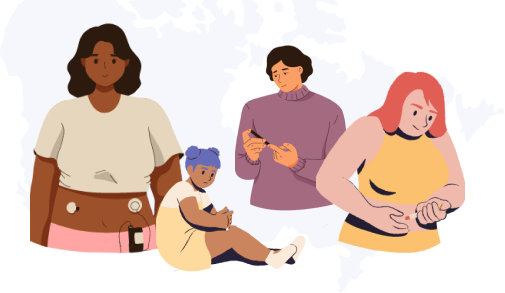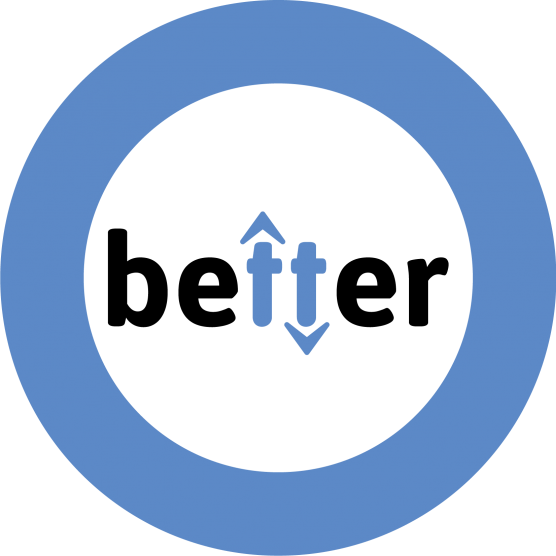Hypoglycemia (blood sugar below 4.0 mmol/L) is not only the most common complication for people who take insulin, but also the one they fear the most. Experiencing hypoglycemia is one of the hardest, most stressful and sometimes scariest part of living with type 1 diabetes (T1D). A study conducted in Quebec found that, on average, people with T1D prevent or treat two hypoglycemic episodes every three days.
Identifying and treating hypoglycemia promptly is crucial for avoiding severe hypoglycemia. Even though healthcare teams often talk about this when they teach patients how to take insulin, they rarely talk about it after that.
Over time, patients develop habits and might underestimate the risk of severe hypoglycemia. But it’s important to remember that circumstances are ever-changing and severe hypoglycemia can occur at just about anytime, so you have to be prepared.
“After 20 years with diabetes, my spouse manages his hypoglycemia alone. Whenever he asks me for help, I know it’s serious. Even though I’m a diabetes nurse, severe hypoglycemia is always alarming, and it’s easy to become overwhelmed,” says Marie.
Know how to identify and define it
Severe hypoglycemia occurs when blood sugar levels fall so drastically (usually below 2.8 mmol/L) that another person’s assistance is needed to treat it. It can be accompanied by symptoms such as:
- difficulty swallowing
- confusion
- drowsiness
- loss of consciousness
- convulsions
In the event of severe hypoglycemia, urgent care is required, otherwise the person may lose consciousness or remain unconscious: this is called hypoglycemic coma.
Severe hypoglycemia has long been defined by health professionals as “hypoglycemia requiring assistance from another person, the use of glucagon, hospitalization, or leading loss of consciousness, with decreased brain function (e.g., ability to respond)”, but a simpler definition might be more accurate.
“Low blood sugar that you are unable to treat on your own” is the simplified definition proposed by patients. This definition would be equally effective for identifying severe hypoglycemia and could be adopted by health professionals. This is what is shown by a recently published study conducted through the BETTER registry.
So, severe hypoglycemia includes asking for help from someone to get something to correct the hypoglycemia, as well as the presence of consciousness disturbance that prevents the person from taking an oral treatment (by mouth).
Continuous glucose monitoring (CGM) systems (Dexcom, Freestyle Libre, Guardian) are excellent tools for monitoring blood glucose, and most of them can sound alerts to reduce the number of hypoglycemic episodes. However, since they measure glucose levels in the interstitial fluid and not in the blood, they may detect hypoglycemia with a slight delay. Therefore, in some cases, it may be useful to do a capillary (finger prick) blood sugar test to clarify/confirm the diagnosis.
“At the onset of his first symptoms, his CGM indicated that no data was available. Fortunately, we had a capillary blood sugar meter,” adds Marie, “because his blood sugar was already below 2.”
Understanding the causes and risk factors
People who have little or no symptoms of hypoglycemia and/or who have had a recent episode of severe hypoglycemia are generally at greater risk of having another episode of severe hypoglycemia.
There are several possible causes of severe hypoglycemia:
- too much insulin circulating in the body
- insufficient carb intake (e.g., skipped meal)
- illness (e.g., vomiting, diarrhea)
- physical activity
Be prepared at all times
If the person is still able to swallow, severe hypoglycemia can be treated with carbs (sugars) taken by mouth with the help of another person.
However, if the person is unconscious or unable to swallow, then someone will need to administer glucagon to treat the severe hypoglycemia. This emergency treatment, which is available in injectable or nasal form, “releases” all of the glucose (sugar) stored in the body to raise blood sugar levels. It can take up to 15 minutes for the blood sugar to rise above 4.0 mmol/L. Note that glucagon is not as effective after drinking a lot of alcohol. It may also be slightly less effective after very long physical activity or in people on a ketogenic (very low-carb) diet.
Although severe hypoglycemia is relatively rare, people living with T1D should carry glucagon with them at all times, and make sure that people around them know how to use it and where to find it, if needed.
“I looked all over the house for glucagon. I had to open several drawers before I found it. I also realized that the blood sugar meter strips had expired and that his meter hadn’t been used in months, maybe even a year,” says Marie.
The importance of having this treatment with you at all times is similar to the need for airbags in every car or to the need for allergy sufferers to carry an EpiPen at all times. |
You can pack an emergency kit with glucagon to have it on hand if you need it. Here are some examples depending on your treatment: injections or an insulin pump. Having glucagon available at key locations (e.g., home, work, cottage) can also be a good idea.
“One day, an episode occurred while he was on a plane. A doctor was called on the intercom and was able to perform a glucagon injection mid-flight. Since then, my husband has prepared an emergency kit that he always carries with him,” adds Marie.
What happens after severe hypoglycemia?
Because severe hypoglycemia is an emergency situation where blood sugar is so low that the brain lacks energy, it can take several hours for a person to recover.
It is recommended that the person eat a snack (about 20 g of carbs) after regaining consciousness and monitor their blood glucose levels closely, preferably with a capillary blood sugar meter. If glucagon has been administered, the person may experience symptoms secondary to the administration of glucagon, which will disappear over time, such as:
- fatigue
- nausea
- vomiting
- sinus pain (nasal glucagon)
- allergic and/or skin reaction
- increased blood pressure and/or pulse
Blood sugar levels might also rise above recommended targets in the hours following glucagon administration.
In addition to the physical symptoms, severe hypoglycemia can be experienced as a shock, not only to the person who suffered it, but also to those around them. These incidents are often described as a frightening, panic-inducing, alarming and dangerous episode that leaves people, especially loved ones, feeling helpless and unprepared.
“My husband’s severe hypoglycemia was a traumatic event for both him and me. I admire his resilience and courage to get through it and get on with his life. It took me several weeks before I stopped being afraid of it happening again,” says Marie.
Sometimes, out of shame or fear of being blamed by their healthcare team, people with T1D are afraid to discuss severe hypoglycemia at medical appointments.
Healthcare care teams should initiate proactive, non-judgmental discussions about hypoglycemia, provide education about what to do in the event of severe hypoglycemia (e.g., treatment, resources), and provide reminders over time, so that people living with T1D and their caregivers are prepared to deal with severe hypoglycemia at all times.
Références :
- Madar, Houssein et al. “Influence of severe hypoglycemia definition wording on reported prevalence in adults and adolescents with type 1 diabetes: a cross-sectional analysis from the BETTER patient-engagement registry analysis.” Acta diabetologica, 10.1007/s00592-022-01987-9. 17 Oct. 2022, doi:10.1007/s00592-022-01987-9
- On ne parle pas assez de l’hypoglycémie sévère!, Type 1 Better, consulté le 7 octobre 2022, https://type1better.com/fr/on-ne-parle-pas-assez-de-lhypoglycemie-severe/
- Pourquoi est-ce important de ressentir les premiers symptômes de l’hypoglycémie?, Type 1 Better, consulté le 7 octobre 2022, https://type1better.com/fr/pourquoi-est-ce-important-de-ressentir-les-premiers-symptomes-de-lhypoglycemie/
- Cours «Comprendre et agir en cas d’hypoglycémie sévère», Plateforme Support, consulté le 7 octobre 2022
- Monographie Baqsimi, consulté le 12 octobre 2022, https://pi.lilly.com/ca/baqsimi-ca-pm.pdf

Written by: Sarah Haag RN. BSc.
Reviewed by:
- Amélie Roy-Fleming Dt.P., EAD, M.Sc.
- Rémi Rabasa-Lhoret, MD, PhD
- Jacques Pelletier, Claude Laforest, Marie-Christine Payette, Sonia Fontaine, Eve Poirier, Michel Dostie, patient-partners of the BETTER project
Linguistic revision by: Marie-Christine Payette
Participate in the BETTER registry!

First registry of people living with T1D in Canada.
Learn More








